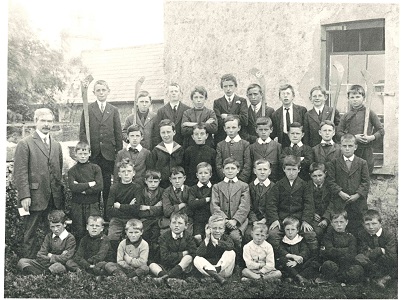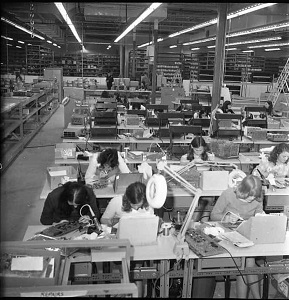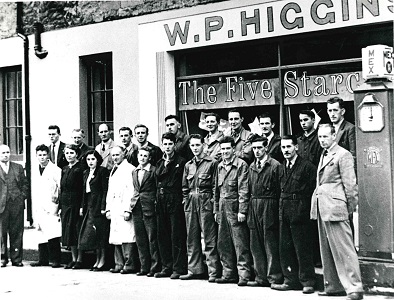Old Galway
Bohermore and some of its people

by Tom Kenny
On the 1651 map of Galway, Bohermore is shown as running from The Green (Eyre Square) to the present Cemetery Cross where the ‘Old Gallows’ was located. There was also a gallows ‘where justice is executed’ near the Green. To the left and right of Bohermore, the land was known as St Bridget’s Hill and the region around Prospect Hill was known as Knocknaganach (Cnoc na Gaineamh), the Sandy Hill.
STEAMER’S QUAY

by Tom Kenny
Alexander Nimmo made a survey of Lough Corrib almost 200 years ago in which he wrote the following “The lake has 50 miles of shore, occupies 30,000 Irish acres and contains 1,000 acres of arable land in its isles, and contracts into a very spacious river about two and a half miles above Galway, which, flowing by the town, communicates with the Atlantic. The fall from the summit of the lake to the sea is considerable, but to the Wood Quay, above the town, it is trifling, and the river is in parts very shallow, running over a bed of rocks and hard gravel. It is not navigable from the sea to the Wood Quay owing to its shallowness and the rapidity of the water, and none but small boats can come down; but unless in very dry seasons, it is thence navigable by boats drawing four feet of water and carrying from ten to twenty tons, with one square sail and four men, to Cong. They seldom sail, unless before the wind, and though the lake has many islets and sunken rocks, the only serious difficulty in navigation is at Buachally Shoal about four miles up the lake, and at Newcastle. These shoals could be deepened for a small sum and the whole made to admit vessels of much greater magnitude. The fine navigation which extends about 30 miles, and into a seaport town, seems to deserve more attention than it has yet received. A good chart with soundings and sailing instructions should be published, the shoals or rocks cleared or beaconed, and a communication opened with the sea”.
ONE HUNDRED YEARS AGO THIS WEEK …

by Tom Kenny
John Henry Foley was one of the greatest artists this country produced in the 19th century. He was a world famous sculptor who was commissioned to produce many public works in different parts of the world including Galway. The statue he produced here was of Lord Dunkellin, a 2.5 metre high bronze on a polished Peterhead Red granite base which stood on two steps of Aberdeen granite about 20 yards inside the main gate into the Square. ‘In none of the great works which have given him world-wide celebrity has he shown more genius and skill than in the present instance where, with only the slender assistance of a photograph, has he been able to produce the faithful likeness’.
A NIGHT OF TERROR

by Tom Kenny
In November 1920, Jimmy Folan, aged 20, of O’Donoghue’s Terrace, Woodquay, was sentenced by court martial to 6 months imprisonment with hard labour for acting as a republican policeman and possessing seditious documents – one of which blamed the local RIC for the killings of Seamus Quirk and Seán Mulvoy. Having served his time, he was released on May 10th, 1921. That evening, a benevolent RIC sergeant warned a local volunteer to tell Jimmy ‘not to be at home tonight’.
DIGITAL EQUIPMENT CORPORATION, 50 YEARS IN GALWAY

by Tom Kenny
In May 1971, it was reported that U.S. computer manufacturer, Digital Equipment Corporation (known here simply as Dec) had chosen Galway for its first hardware manufacturing base in Europe because of the availability of an English-speaking workforce, a favourable tax policy, a local university and the anticipated entry of Ireland into the EEC.
The company started with 30 employees, reaching 109 by the end of the year, at its 40,000 sq. foot Mervue plant, assembling and shipping mini-computer systems, mainly for the European market. At the same time, work began on a new 130,000 sq. foot facility at Ballybrit. The business grew rapidly and by the time Taoiseach Liam Cosgrave officially opened the Ballybrit plant in September, 1973, the factory was employing an extra 40 people per month.
THE GALWAY YOUTH ORCHESTRA, 40 YEARS

by Tom Kenny
Years ago, there was neither an independent community orchestra nor a musical instrument teaching system in Galway city or county. A handful of schools, mostly run by religious orders, taught a small range of instruments and would put a small orchestra together for their annual school show or operetta, their music teachers being very influential in passing on a love of music to their pupils.
Higgins’ Garage

by Tom Kenny
In 1912, WP Higgins, working from his base in Athenry, went to Cork city to meet Henry Ford to ask him for the Ford dealership. It marked the start of a great business partnership between a business legend and Higgins' Garage.
Meanwhile, in Galway, Bertie Simmons had owned and operated a garage in a little alley off William Street called The Corrib Motor and Engineering Works. Bertie was a mechanical engineer and he painted a Model T silver with a red cross on each door and drove this ambulance to France to support the Allies' cause. While he was in France, his father, a photographer, tried to manage the business but it declined and it was decided to sell it. WP Higgins bought the garage and all the tools and lathes for £100 in 1917 and so was able to move his Ford dealership into town.
THE SACRE COEUR HOTEL, THE EARLY YEARS

by Tom Kenny
My earliest memory of Jim was of him building his house near us in Salthill. He had a small corrugated iron shed he lived in while working there. We local working men, all of us about six or seven years old, decided he needed a hand, so we went to “help” him, moving sand and mixing cement etc. We were obviously a complete distraction and a nuisance but he was a gentle man. He would sit us down beside his shed, give us a slice of bread and jam and then frighten the life out of us telling us ghost stories. A very nice way of getting rid of us at the same time as vastly improving the efficiency level of the amount of work being done on site.
